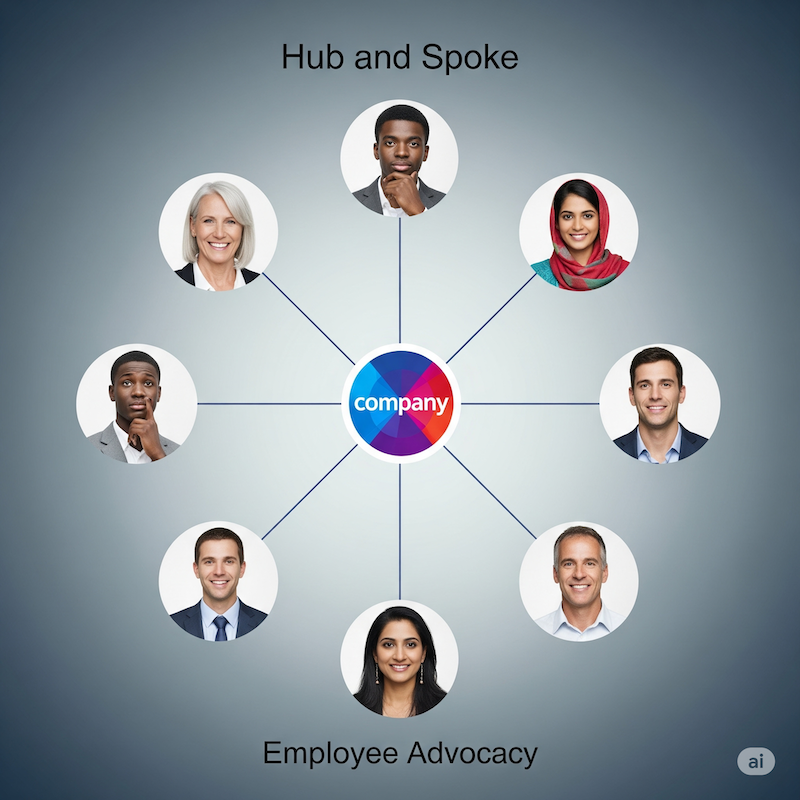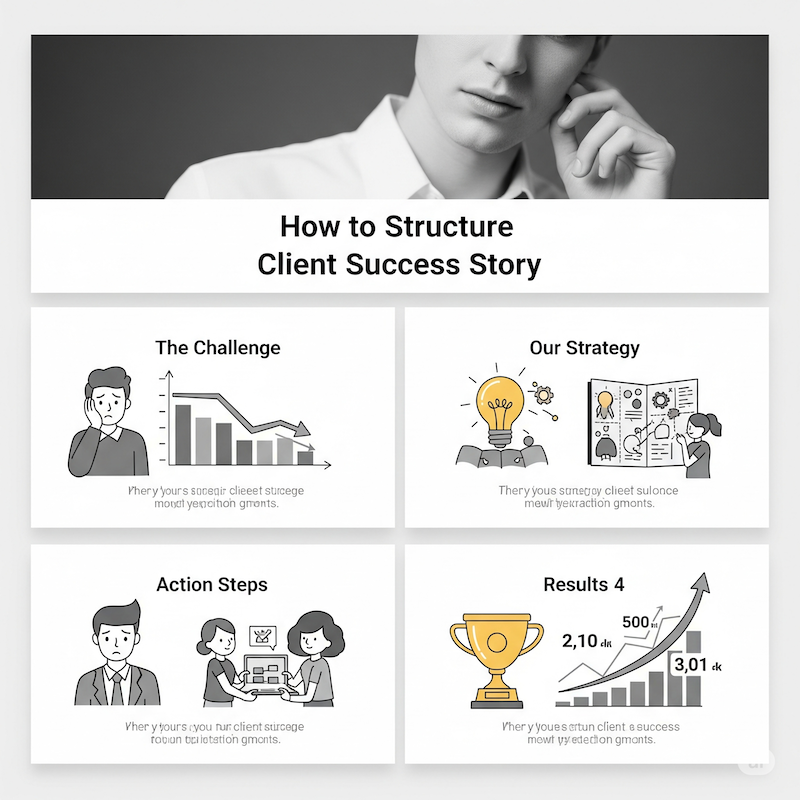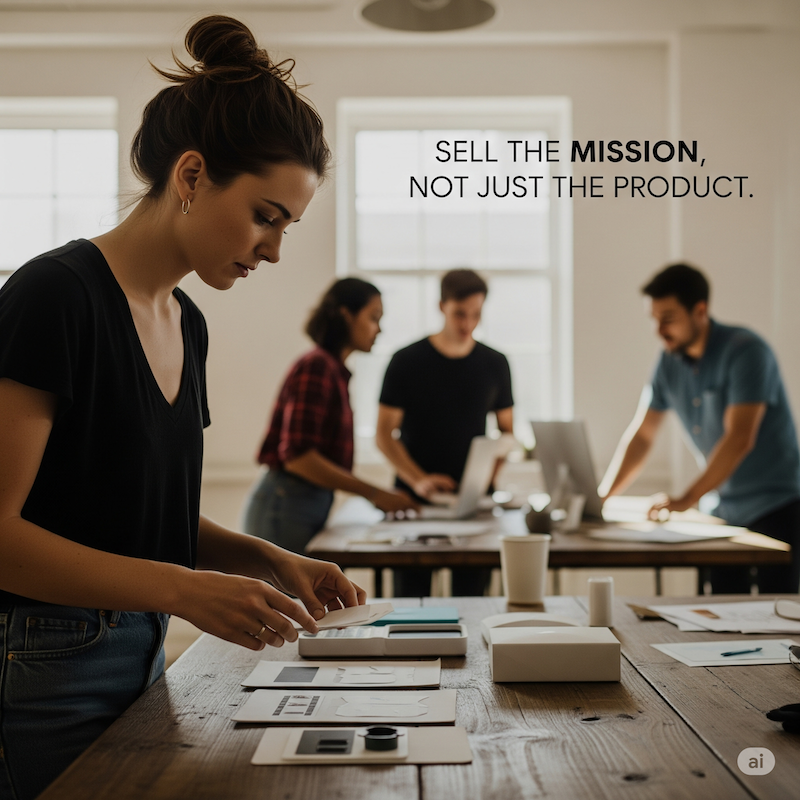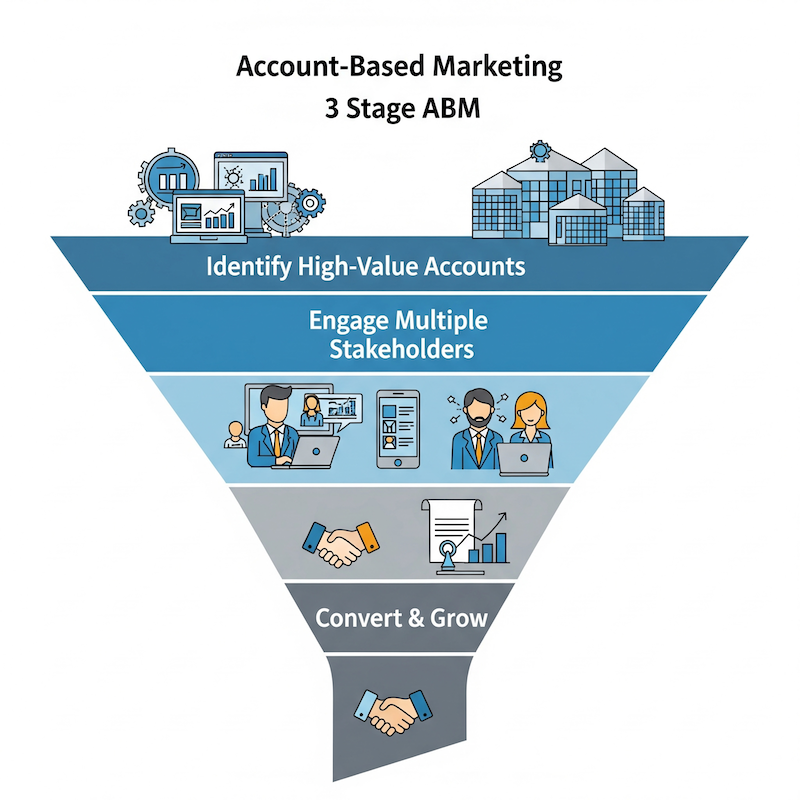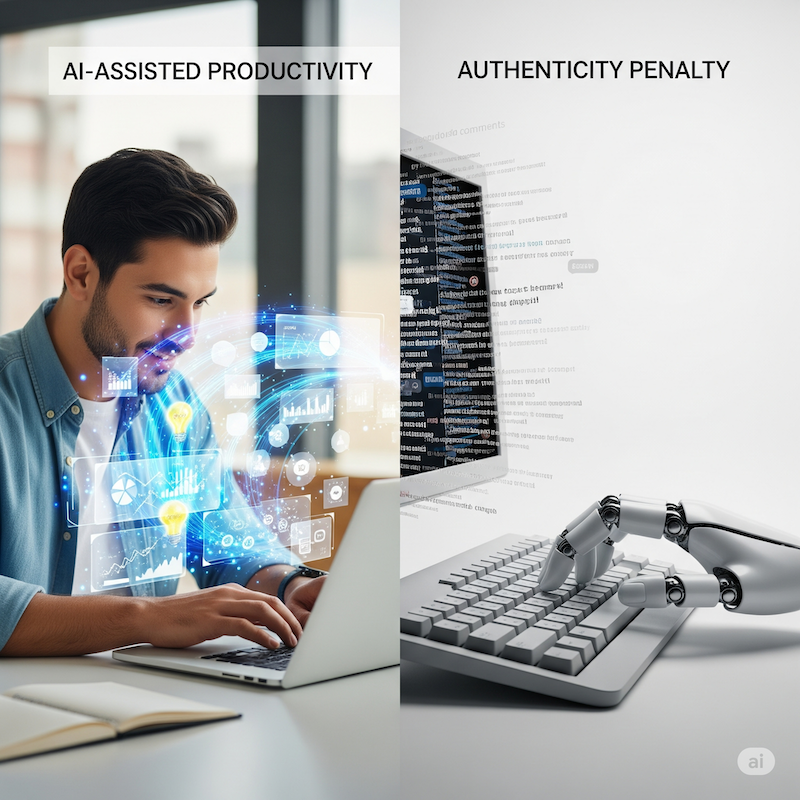Decoding LinkedIn in 2025: The Ultimate Algorithm Guide for Marketers, Founders, and Creators
Introduction: The Rules Have Changed
If you've felt like your voice is getting lost on LinkedIn lately, you're not imagining it. Many seasoned marketers, founders, and creators have noticed a significant shift in 2025: a dramatic decline in organic reach that has left once-effective strategies feeling obsolete.¹ The data confirms this feeling. Brand posts, which once had a respectable presence, now make up a mere 1-2% of the average user's feed, a steep drop from 7% in 2021. The old playbook of chasing virality and broadcasting corporate updates is officially broken.
This change isn't a glitch; it's a fundamental paradigm shift in LinkedIn's philosophy. The platform is no longer a simple social network for professionals; it is evolving into a curated knowledge ecosystem. Its algorithm is now deliberately designed to prevent shallow, viral content in favour of fostering on-platform, knowledge-based communities. The new objective is to fill user feeds with relevant professional advice and expertise, creating an environment where value and credibility are the primary currencies.
To succeed in this new landscape, professionals must understand and align with the three pillars of 2025 success:
People over Pages: The algorithm has made a clear choice, heavily favouring content from individual profiles over corporate brand pages. The authentic voice of an expert now carries more weight than a polished logo.
Knowledge over Noise: The platform is actively rewarding expertise. Content that is value-driven, educational, and insightful receives an explicit boost, while low-quality posts and engagement bait are systematically deprioritised.
Dwell Time over Quick Clicks: LinkedIn's primary business goal is to keep its users engaged on the platform. Consequently, the algorithm rewards content that holds attention and penalises posts that send users away to external websites.
This guide will deconstruct the 2025 LinkedIn algorithm, moving from its core mechanics to universal best practices. Most importantly, it will provide comprehensive, tailored play-books for six key professional archetypes—Freelancers, Agencies, D2C Businesses, Founders, Digital Marketing Collectives, and B2B Businesses—offering a clear roadmap to not just survive, but thrive in LinkedIn's new era.
The 2025 LinkedIn Algorithm: How It Really Works
To master LinkedIn in 2025, one must first understand the "why" behind the algorithm's behavior. It's not an arbitrary set of rules but a sophisticated system designed to achieve a specific business objective: to make LinkedIn the most valuable and indispensable platform for professional growth, thereby maximizing user session time.⁴ Every feature, penalty, and reward can be traced back to this core mission.
The New Philosophy: From Social Network to Knowledge Ecosystem
The platform's evolution represents a strategic business decision to differentiate itself from the chaotic, trend-chasing nature of other social networks. While others pursue fleeting entertainment, LinkedIn is doubling down on its fundamental value proposition: professional development and high-caliber networking. This has led to a deliberate algorithmic design that actively prevents traditional virality, instead promoting niche expertise and meaningful, in-depth conversations.
The algorithm is now engineered to identify and suppress low-value content. Posts that rely on "engagement bait"—phrases like "Comment YES if you agree!"—are being systematically down-ranked, along with clickbait headlines and other manipulative tactics. This move away from rewarding cheap tricks is coupled with a significant investment in the B2B creator economy, where new tools and programs are being rolled out to help experts monetize their knowledge directly on the platform.
This dual action—penalizing noise while rewarding expertise—reveals a clear strategic intent. LinkedIn is cultivating a specific type of content ecosystem, one built on professional credibility rather than entertainment value. For users, this means the central question must shift from "How do I go viral?" to "How do I become the most trusted and valuable source of knowledge in my niche?"
Your Post's Journey: The Three-Step Gauntlet
When you publish a post, it doesn't simply appear in your connections' feeds. It must first pass through a rigorous, multi-stage evaluation process designed to filter out noise and identify value. Understanding this three-step gauntlet is crucial for crafting content that has a chance of succeeding.
Step 1: The Quality Filter (Initial Classification)
The moment you hit "post," a machine learning model scans and classifies your content into one of three categories: "Spam," "Low-Quality," or "High-Quality".
Spam: Content that triggers this filter is suppressed almost immediately. Common triggers include using excessive or irrelevant hashtags (especially #follow or #like), tagging a large number of people who aren't relevant to the post, including multiple external links, exhibiting poor grammar, or posting too frequently.
Low-Quality: This content isn't necessarily spam but lacks the signals of a valuable post. It may be overly promotional, unoriginal, or simply unlikely to generate meaningful discussion. Its reach will be severely limited.
High-Quality: Posts that are well-structured, original, and appear to offer professional value pass this initial check and move to the next stage.
Step 2: The Engagement Test (The "Golden Hour")
Once a post is deemed high-quality, the algorithm shows it to a small, targeted sample of your audience to test its performance. This critical window, often called the "golden hour," typically lasts for the first 60 to 90 minutes after publishing.
During this period, the algorithm gauges the speed and quality of interactions. Strong early engagement, particularly in the form of meaningful comments and shares with added insight, signals to the algorithm that the content is valuable and resonant.
Step 3: Network & Relevance Ranking
For posts that pass the engagement test, the final step is a sophisticated ranking process that determines their placement in the feeds of individual users. This is not a one-size-fits-all process; it's highly personalized based on several key factors:
Connection Strength: The algorithm heavily prioritizes content from a user's 1st-degree connections.
Relevance and Personalization: The algorithm creates a unique "interest profile" for each user, analyzing their profile data, past interactions, and followed hashtags to predict what they will find most relevant.
Author Authority: LinkedIn begins to recognize you as a subject-matter expert in your niche if you consistently share high-quality content on a specific topic. This "topic authority" gives your future posts on that subject an algorithmic boost.
Deep Dive: The Technical Mechanics & Ranking Signals That Truly Matter
The Quality of Engagement
The algorithm has become much more discerning about what constitutes valuable engagement.
A thoughtful, conversational comment is the gold standard of engagement. Data shows that longer comments of 15-20 words or more have a significantly higher algorithmic weight—up to 2.5 times the impact—than short, generic replies like "Great post!".
The Authenticity Penalty
The algorithm actively penalises the use of AI-generated comments. These comments receive approximately 5 times less response and are easily identified by the system and users alike, damaging the poster's credibility. Authenticity is not just a buzzword; it's a technical requirement for success.
The Modern LinkedIn Playbook: Universal Best Practices
Translating algorithmic knowledge into a practical strategy is the next step. This section provides a universal playbook of best practices for any professional.
Content Format Power Rankings for 2025
Not all content formats are equal. Focus your energy on the highest-performing formats to get better results.
The New Hierarchy of Engagement: What Your "Likes" Are Really Worth
The algorithm weighs different interactions differently. Chasing "likes" is a losing strategy.
The Art of Proactive Engagement: The 30-60-30 Rule
Success on LinkedIn is not a passive activity. The algorithm rewards active, consistent participation.
Before Posting (30 Minutes): Warm up the algorithm by leaving 10-15 meaningful comments on other relevant posts.
After Posting (The Golden Hour - 60 Minutes): Dedicate this time to replying to every single comment on your new post to stimulate discussion.
Ongoing (30 Minutes/Day): Consistency is key. Dedicate a small block of time each day to continue engaging with your network.
Your Profile as a Pillar: The Foundation of Trust
Your profile is the foundation of your credibility. A complete, professional profile gets up to 30% more weekly views.
Essential Profile Optimization Checklist:
✅ Professional Photo & Branded Banner
✅ Keyword-Rich Headline (e.g., "Helping B2B SaaS Companies Scale with Content Marketing")
✅ Complete "About" Section with a story and call-to-action
✅ Featured Section to pin your best work and social proof
✅ Skills & Endorsements to add credibility
Tailored Strategies for Your Niche: Winning on LinkedIn in 2025
While universal practices form the foundation, true mastery requires a tailored approach.
For Freelancers: Building Your Personal Brand & Lead Funnel
Core Goal: Establish expertise and create a consistent inbound lead funnel.
Mindset Shift: Your profile is your business storefront. Every post is a mini-case study.
Content Strategy: The "Teach & Prove" Model
Your content should consistently answer the question, "What is it like to work with you?" The goal is to give away your knowledge to sell your services.
Post "How-To" Guides and Frameworks: Share the actual processes you use. This is the most direct way to prove your expertise.
Share "Behind-the-Scenes" Stories: Humanize your expertise by sharing relatable stories of challenges and wins.
Publish Unpopular Opinions: A thoughtful, contrarian view on an industry trend sparks debate and showcases critical thinking.
For Agencies & Digital Marketing Collectives: Driving Client Acquisition Through Authority
Core Goal: Position the agency as the undisputed thought leader in its niche.
Mindset Shift: Your company page is the "hub," but your team members are the "spokes" that give it power.
Strategy: Activate and Systematize Employee Advocacy
Your team is your greatest marketing asset. Employee posts generate up to 5 times more engagement than identical posts from a company page. Create a structured program to make it easy for your team to share.
Content Tip: Weaponize Case Studies
Use the Carousel (PDF) format to transform client success stories into compelling, multi-slide narratives showing the Challenge, Strategy, Actions, and Quantifiable Results.
For D2C Businesses: Crafting a Brand Story & Community
Core Goal: Build powerful brand affinity by selling your mission, not just your product.
Mindset Shift: You are not a product catalog. On LinkedIn, you are selling your story, values, and culture.
Strategy: Embrace Founder-Led Storytelling
For a D2C brand, the founder's personal profile is the single most powerful marketing asset. The founder should be the brand's chief storyteller, sharing the "why" behind the company, the origin story, and the real struggles and successes of the journey. This forges an emotional connection that product features cannot.
For Founders: Networking for Talent, Capital, and Growth
Core Goal: Build a personal brand that acts as a magnet for venture capital, top-tier talent, and strategic partners.
Mindset Shift: Your LinkedIn profile is a strategic asset and a dynamic extension of your pitch deck.
Content Strategy: The "Vision & Velocity" Model
Your content must send two clear signals:
Vision (Thought Leadership): Post about the future of your industry. Share unique, contrarian insights that position you as a market shaper.
Velocity (Momentum Updates): Share a consistent narrative of progress—key hires, product updates, customer wins, and growth metrics. This creates a perception of momentum that is magnetic to investors and talent.
For B2B Businesses: Engineering a High-Performance Revenue Engine
Core Goal: Transform LinkedIn into a predictable, scalable, full-funnel revenue engine.
Mindset Shift: Build a systematic machine that identifies, engages, and converts target accounts with precision.
Strategy: Advanced Targeting with Account-Based Marketing (ABM)
Flip the traditional marketing funnel. Use tools like LinkedIn Sales Navigator to identify your highest-value target accounts and the key decision-makers within them. Then, use Matched Audiences to serve highly personalized ads and content directly to those stakeholders. This ensures your marketing budget is spent with maximum efficiency.
The Future is Here: AI, the Creator Economy, and What's Next (2026 and Beyond)
To maintain a competitive edge, professionals must look ahead to the forces that will shape the platform in the near future.
LinkedIn's Embrace of the Creator Economy
LinkedIn is no longer just observing the creator economy; it is actively investing to become a central player. This is transforming the platform into a viable space for professionals to build a media presence and monetize their expertise. The line between being a "thought leader" and a "professional creator" is blurring.
The Double-Edged Sword of AI
Artificial intelligence is the other seismic force reshaping the platform, presenting both immense opportunities and significant risks.
AI as a Productivity Tool: AI can be used for brainstorming content ideas, conducting rapid research, and streamlining marketing workflows. LinkedIn itself is integrating AI into its ad and recruiting products.
The Authenticity Penalty and Trust Erosion: The 2025 algorithm actively penalizes low-quality, AI-generated content, especially in comments.
The winning strategy for 2026 and beyond is "AI-Assisted, Human-Led." Leverage AI as a powerful assistant, but ensure the final content is infused with genuine human insight, unique experience, and an authentic voice.
Conclusion: Your Action Plan for LinkedIn
Navigating LinkedIn in 2025 is complex, but the path to success is unified by a single, powerful principle:
Create consistent, high-value, niche-specific content from an authentic human perspective that aims to start a conversation.
This is not a platform for broadcasting, but for engaging. It is not a stage for corporate monologues, but a forum for expert dialogue. The algorithm doesn't reward those who shout the loudest, but those who teach the most effectively, share the most honestly, and connect the most genuinely.
Your action plan begins now. Review the tailored strategies above. Choose one key strategy and commit to implementing it consistently for the next 90 days. By aligning your efforts with the platform's core philosophy, you will build the credibility, trust, and relationships that drive meaningful career and business growth.
Which of these 2025 algorithm shifts has impacted your strategy the most? Let's discuss in the comments.









